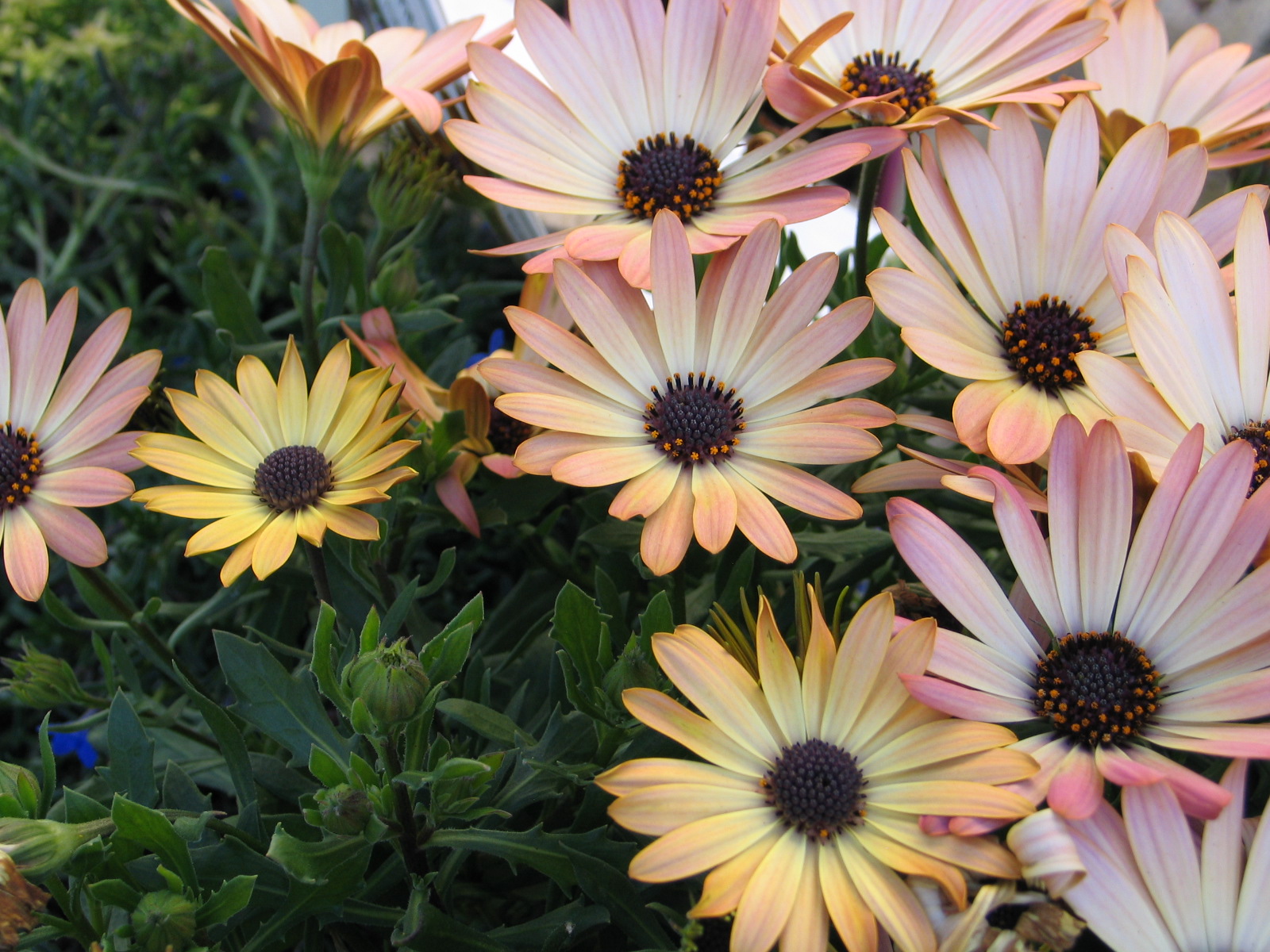In plant materials, sometimes you really do get what you pay for.The Hellebores' stay here is nearly at an end. I have enjoyed having these little beauties here since the day I posted about their arrival just over 3 months ago in November 2010. Since they arrived, they've done nothing but amaze me. Their quality is outstanding, far superior than what was available locally. These green friends illustrated beautifully that sometimes it is well worth it to pay more for something that on the surface seems like the same thing.You see, the same week that I received that box of beauties from Fraser's Thimble Farms, I got a little green myself and drove over to a well regarded retail nursery in the East Bay. I paid $20. for a single 1 gallon plant of the exact same cultivar. My client's plants cost $39. each, not counting shipping and inspection certificates (so actually, they cost quite a bit more than that). I potted them on arrival because they had been bare-rooted for the trip, and soon they'll be installed in their new home's garden. In the photo below, that scrappy little guy in the front is mine.
Since they arrived, they've done nothing but amaze me. Their quality is outstanding, far superior than what was available locally. These green friends illustrated beautifully that sometimes it is well worth it to pay more for something that on the surface seems like the same thing.You see, the same week that I received that box of beauties from Fraser's Thimble Farms, I got a little green myself and drove over to a well regarded retail nursery in the East Bay. I paid $20. for a single 1 gallon plant of the exact same cultivar. My client's plants cost $39. each, not counting shipping and inspection certificates (so actually, they cost quite a bit more than that). I potted them on arrival because they had been bare-rooted for the trip, and soon they'll be installed in their new home's garden. In the photo below, that scrappy little guy in the front is mine.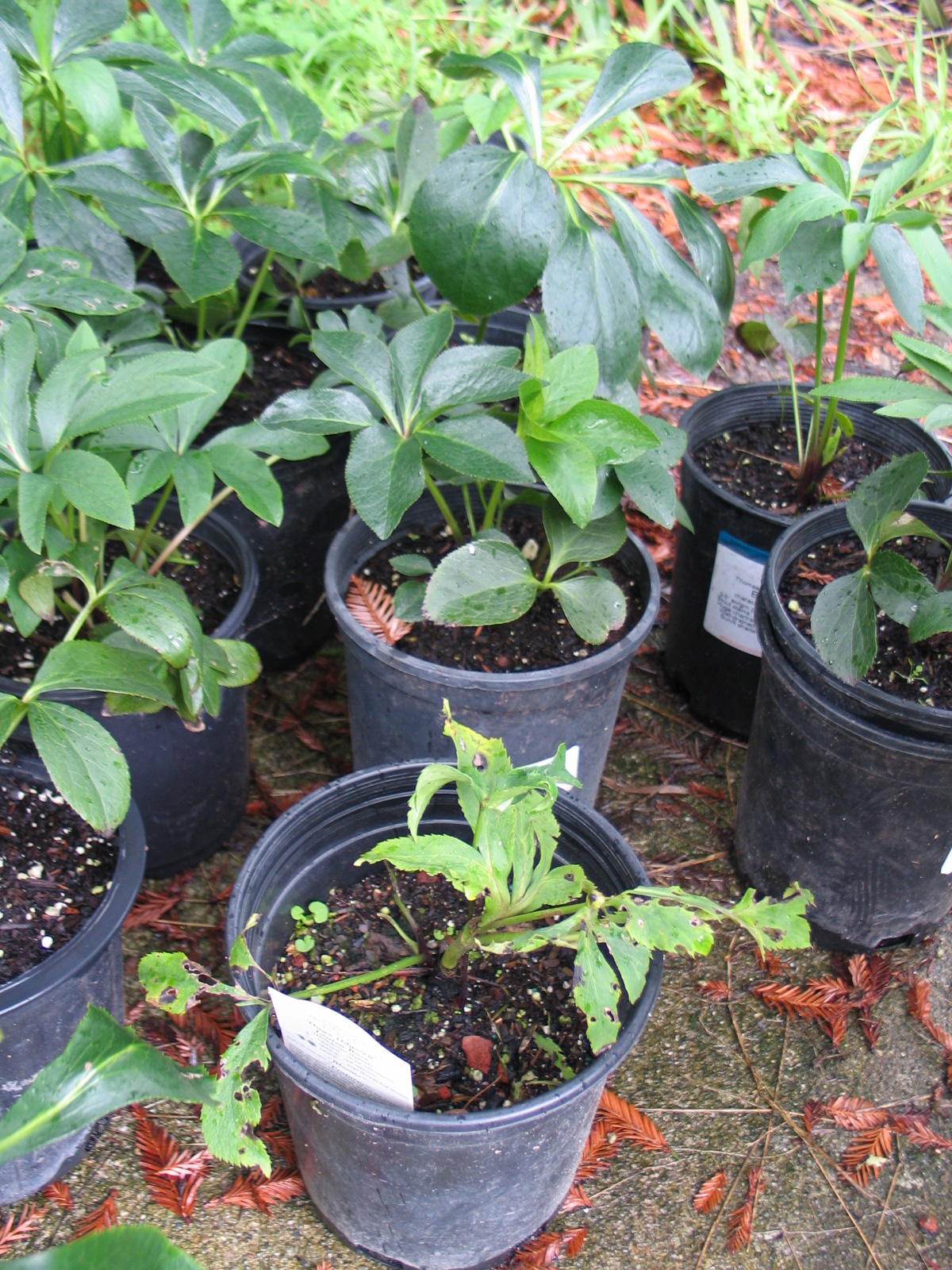 Unfortunately, my plant looks exactly as it did the day I got it, where my client's plants are considerably nicer. The ones from Fraser's are known to be about 4 years old. In conversations with their staff, I learned that Hellebores need to be a few years old before they are mature enough to bloom, so perhaps this is the problem with my little one....OR perhaps the difference is that mine was grown without personal attention at a commercial grower where the ones from Fraser's were grown with care by a knowledgeable bunch of people. Either way, it was well worth the extra money for quality plant materials.
Unfortunately, my plant looks exactly as it did the day I got it, where my client's plants are considerably nicer. The ones from Fraser's are known to be about 4 years old. In conversations with their staff, I learned that Hellebores need to be a few years old before they are mature enough to bloom, so perhaps this is the problem with my little one....OR perhaps the difference is that mine was grown without personal attention at a commercial grower where the ones from Fraser's were grown with care by a knowledgeable bunch of people. Either way, it was well worth the extra money for quality plant materials. I'm looking forward to seeing if mine grows into a nice specimen now that I'm in charge, and to seeing how well the ones going to my clients' garden will perform over time under the care of his gardener. I will be very interested to watch them all, even though I'm sad to see these beauties leave my patio.
I'm looking forward to seeing if mine grows into a nice specimen now that I'm in charge, and to seeing how well the ones going to my clients' garden will perform over time under the care of his gardener. I will be very interested to watch them all, even though I'm sad to see these beauties leave my patio.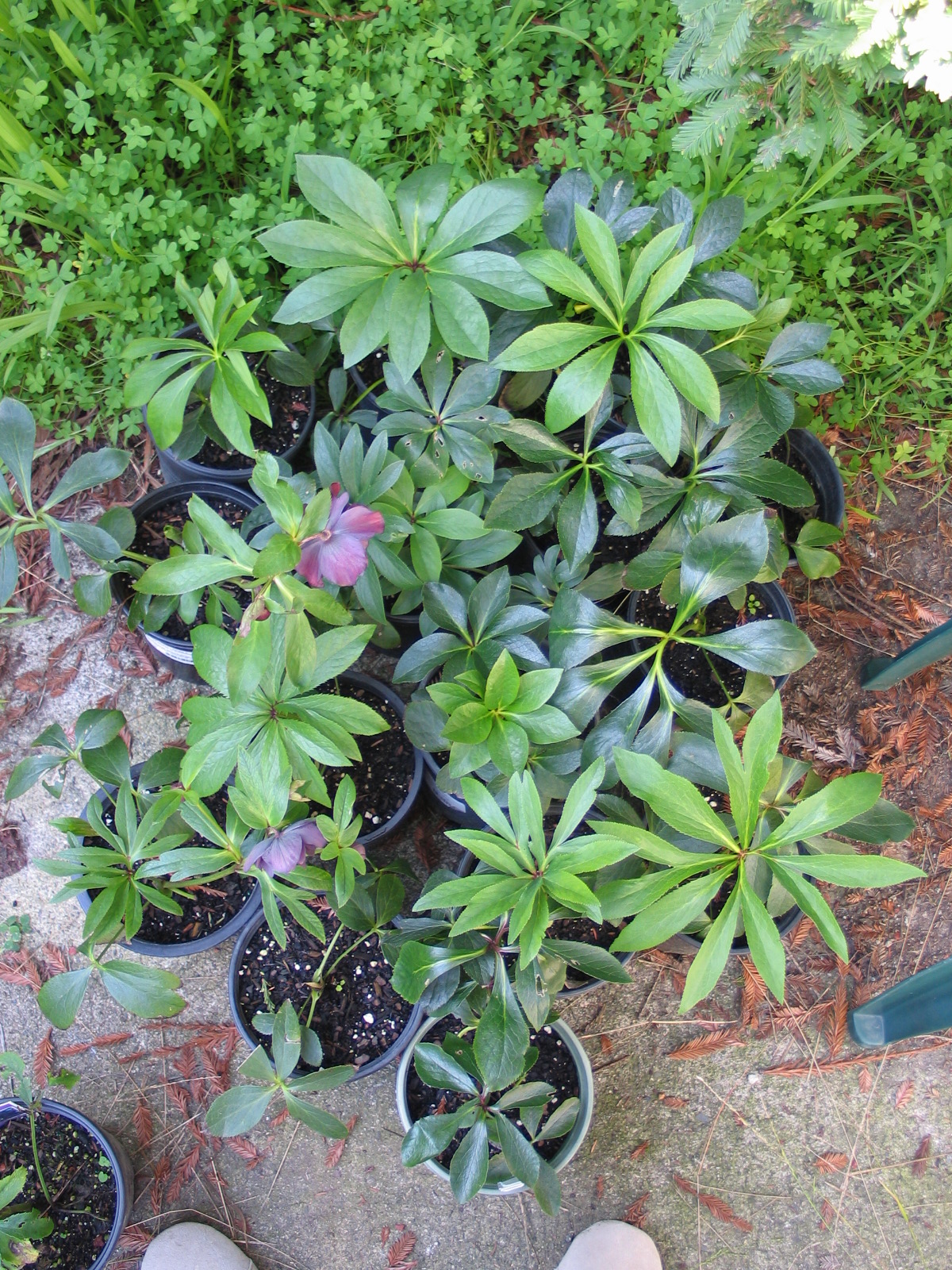
My Client's Plants
I am working on the design of a garden in San Francisco and was pleasantly surprised today by the delivery of the Hellebores that were ordered from Canada. While I was potting them for protection during their wait to be installed at the site, it occurred to me that this shipment of plants represented some thoughts on customer service and the design/construction processes.Most Landscape Architecture firms would not be able to accept delivery of plants for a client and care for those plants until they could be installed. They might rely instead on either using only the plants that are seasonally available or contract growing (with someone else) to care for those plants that must be received before the site is ready. There are issues of liability (what if they die?!), space, and materials for the task. What results can be either a prohibitively complicated and expensive ordeal, a garden that is skewed to one particular season, or having to ask the client to be patient and wait while plants become available in the future (not always acceptable by some clients).  Included in this particular project there will be a discrete courtyard featuring a statue. We are using four different plants; Ficus pumila (Creeping Fig), Ophiopogon nigrescens (Black Mondograss), Helleborous 'Onyx Odyssea' (a double black flowering Lenten Rose), and Iris 'Frosted Velvet' (a "miniature tall" form Bearded Iris). The Ficus and Ophiopogon are evergreen and will form the main planting to show off the sculpture, then the Iris will be in bloom in the Spring with leaves from late Winter through Summer, and the Hellebores will be in bloom in Winter with leaves holding on through Spring. I don't expect to have both Irises and Hellebores flower at the same time, though it is possible that this could occur depending on weather conditions and temperatures (especially in the Bay Area). While the Irises prefer more sun and the Hellebores more shade, the site location and orientation make it possible to use both in the same small area.I presented the palette (above) to the client earlier this month. Before doing presenting, I learned that the Iris were not going to be shipped until next July, and that our local growers who carried the Hellebores had already sold out for the year. I explained to the client that we would be ordering the Iris for delivery nine months in the future and that the Hellebores would need to be ordered immediately from Canada before the grower's shipping season closed. He accepted the planting concept, so I had the plants ordered with delivery to my home. I did this for a couple of reasons:1. I wanted to inspect the plants before anyone else saw them to make sure there were no problems (and I work from home). Having them shipped to my home also meant that I could accept delivery at any time (they arrived today - the Saturday after Thanksgiving) regardless of holidays, weekends, and business hours.2. The plants would be shipped bare root and would need immediate attention by someone who knew what to do and had the time.3. The landscape contractor had not yet been formally retained.4. This also made me feel that I was giving my client the best service I could by personally protecting his investment in them and, by extension, his trust in me.It is my habit to order plants from all over the world. Because of this, I knew ahead of time that both mail order companies were reputable and that the plants would likely be in great shape. I was not disappointed! Fraser's Thimble Farms worked with me to hold the plants until the payment arrived. I took their advice to pay for air priority shipping. The plants also required a Phytosanitary Certificate (they were inspected by the Canadian Food Inspection Agency) before coming into the U.S. The shipment was also opened and inspected by U.S. Customs upon arrival.Below are some photos from this morning's potting:
Included in this particular project there will be a discrete courtyard featuring a statue. We are using four different plants; Ficus pumila (Creeping Fig), Ophiopogon nigrescens (Black Mondograss), Helleborous 'Onyx Odyssea' (a double black flowering Lenten Rose), and Iris 'Frosted Velvet' (a "miniature tall" form Bearded Iris). The Ficus and Ophiopogon are evergreen and will form the main planting to show off the sculpture, then the Iris will be in bloom in the Spring with leaves from late Winter through Summer, and the Hellebores will be in bloom in Winter with leaves holding on through Spring. I don't expect to have both Irises and Hellebores flower at the same time, though it is possible that this could occur depending on weather conditions and temperatures (especially in the Bay Area). While the Irises prefer more sun and the Hellebores more shade, the site location and orientation make it possible to use both in the same small area.I presented the palette (above) to the client earlier this month. Before doing presenting, I learned that the Iris were not going to be shipped until next July, and that our local growers who carried the Hellebores had already sold out for the year. I explained to the client that we would be ordering the Iris for delivery nine months in the future and that the Hellebores would need to be ordered immediately from Canada before the grower's shipping season closed. He accepted the planting concept, so I had the plants ordered with delivery to my home. I did this for a couple of reasons:1. I wanted to inspect the plants before anyone else saw them to make sure there were no problems (and I work from home). Having them shipped to my home also meant that I could accept delivery at any time (they arrived today - the Saturday after Thanksgiving) regardless of holidays, weekends, and business hours.2. The plants would be shipped bare root and would need immediate attention by someone who knew what to do and had the time.3. The landscape contractor had not yet been formally retained.4. This also made me feel that I was giving my client the best service I could by personally protecting his investment in them and, by extension, his trust in me.It is my habit to order plants from all over the world. Because of this, I knew ahead of time that both mail order companies were reputable and that the plants would likely be in great shape. I was not disappointed! Fraser's Thimble Farms worked with me to hold the plants until the payment arrived. I took their advice to pay for air priority shipping. The plants also required a Phytosanitary Certificate (they were inspected by the Canadian Food Inspection Agency) before coming into the U.S. The shipment was also opened and inspected by U.S. Customs upon arrival.Below are some photos from this morning's potting:

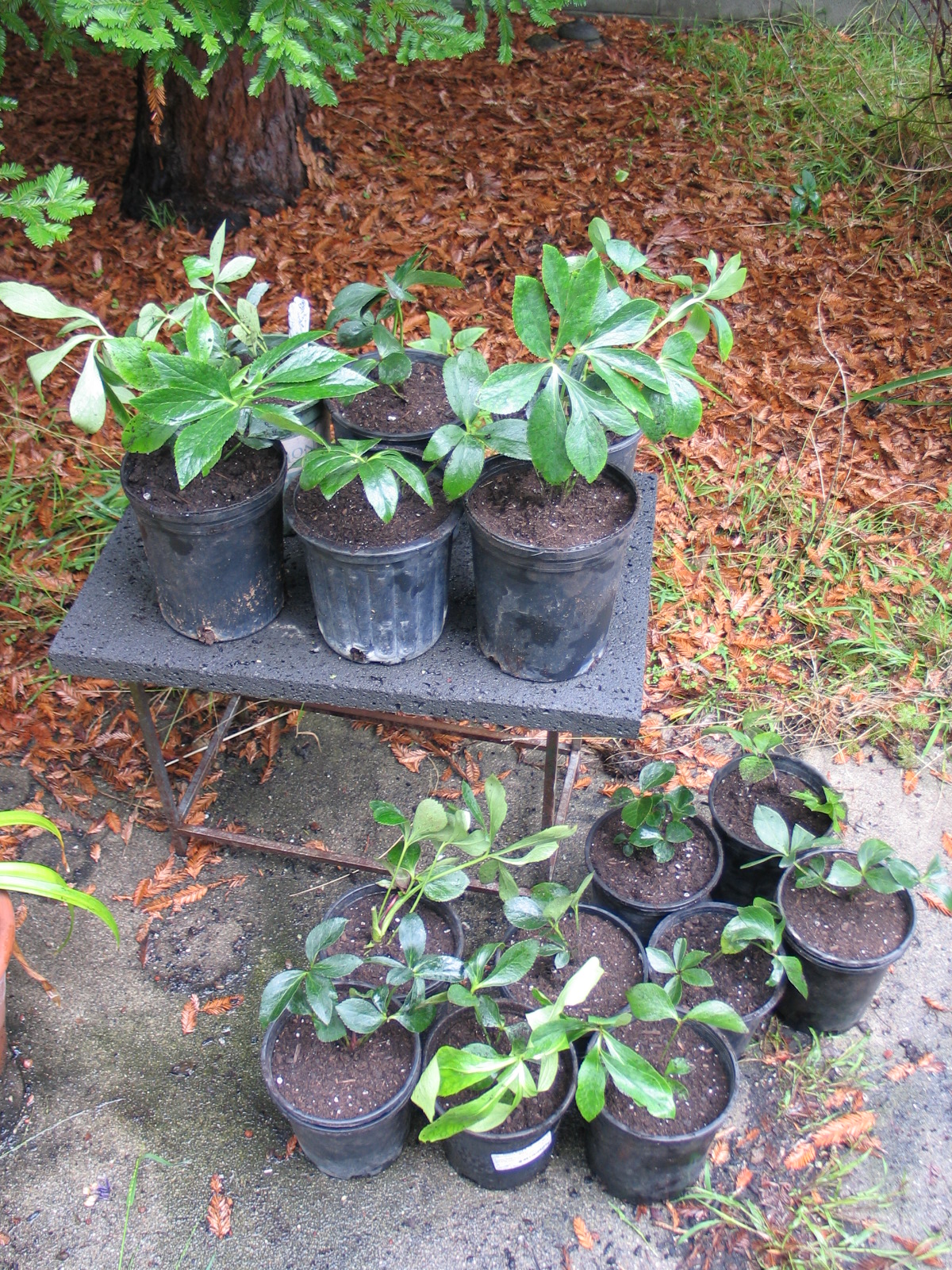 All in all, excellent plants - potted and ready for what comes next. My own Hellebores have not leafed-out yet, so it will be interesting to see how these behave, but they each have new growth on them (see the middle photo). They've been through a lot, being bare-rooted, inspected twice, then finally re-potted (they'll be disturbed again soon when they're planted in their new home).I have been frustrated in the past with the issues that come up when trying to design a garden around the seasonal availability of the plants I want to use. I think it is well worth the extra effort to get the exact plants desired rather than giving up and just finding something else that is less of a pain. I am looking forward to seeing them planted in their new home and will post again....
All in all, excellent plants - potted and ready for what comes next. My own Hellebores have not leafed-out yet, so it will be interesting to see how these behave, but they each have new growth on them (see the middle photo). They've been through a lot, being bare-rooted, inspected twice, then finally re-potted (they'll be disturbed again soon when they're planted in their new home).I have been frustrated in the past with the issues that come up when trying to design a garden around the seasonal availability of the plants I want to use. I think it is well worth the extra effort to get the exact plants desired rather than giving up and just finding something else that is less of a pain. I am looking forward to seeing them planted in their new home and will post again....
"Low Maintenance" Gardens?
It seems that everyone is aware that gardens can require some effort to maintain. Professionals in the landscape design and construction industry understand that the success of any outdoor space depends on thoughtful design, quality installation, and ongoing, intelligent maintenance. Not one of these three items can deliver the desired result without the other two.
Read moreHow to become a Great Client
I just got this blog post in my e-mail from Seth Godin this morning which ties in nicely with the book What Your Contractor Can't Tell You that my good friend Susan introduced me to. Nevermind that Mr. Godin uses logo design as his example, and never mind that the book focuses on working with Architects and contractors as opposed to Landscape Architects. BOTH sources discuss the same notion: being a "good" client, or at the very least, an informed one (weirdly, though, they seem to disagree on some points)."Good" clients are beneficial to the entire process, save everyone time, money, and headaches. The responsibility is not the client's alone, however. When the relationship between the client and the professionals they've hired is a productive one, the project always benefits. I am thinking about getting extra copies of that book for my office (knowing full well that suggesting to someone that they read either the post or the book won't necessarily result in them reading either). It is that good. No, really. The $15. you spend on that book can save you thousands in the long and short run. Not a bad return on investment!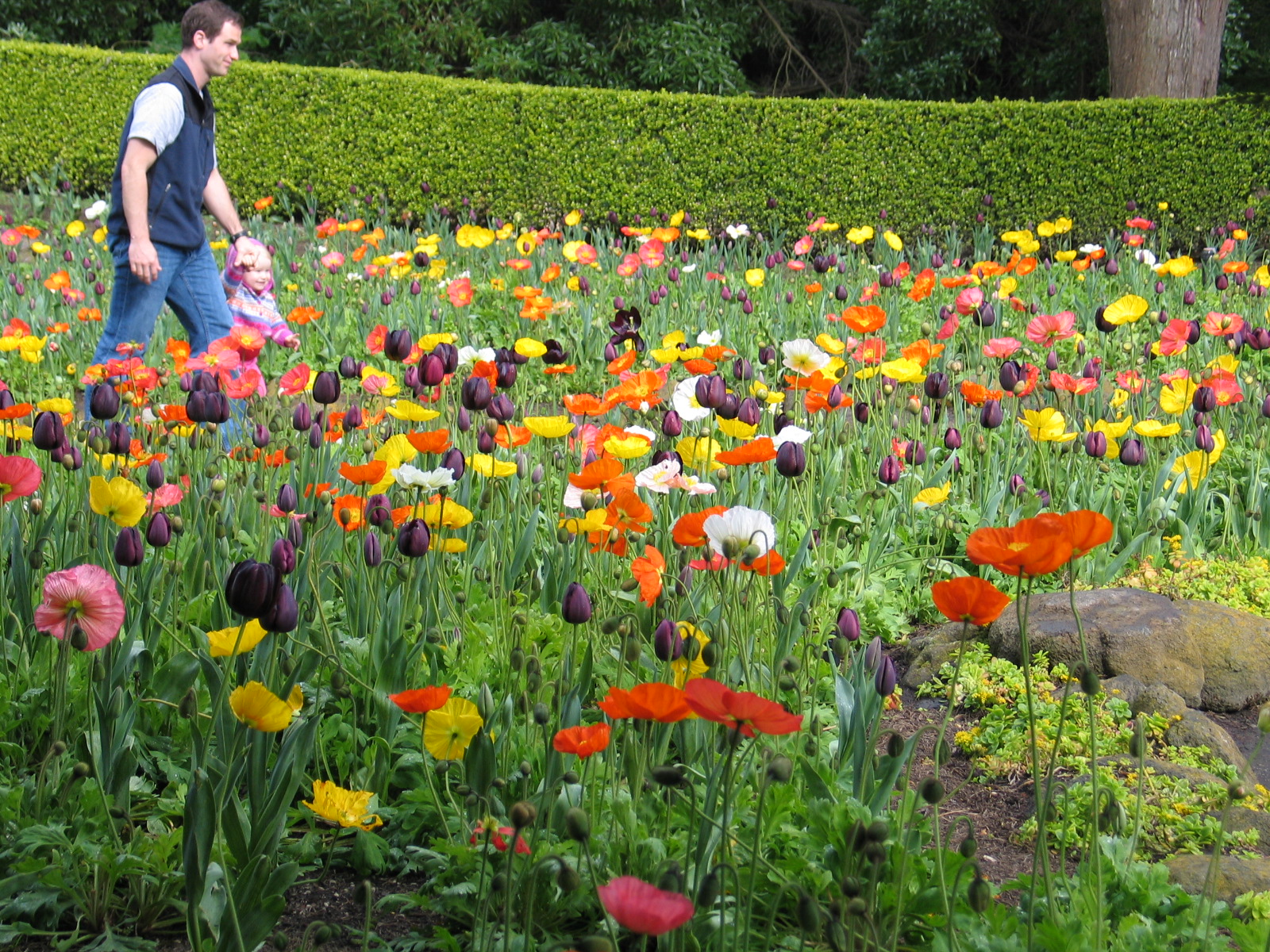 I leave you with images from the Windmill Garden in San Francisco - a seasonal planting that I really enjoyed back in April 2006.
I leave you with images from the Windmill Garden in San Francisco - a seasonal planting that I really enjoyed back in April 2006.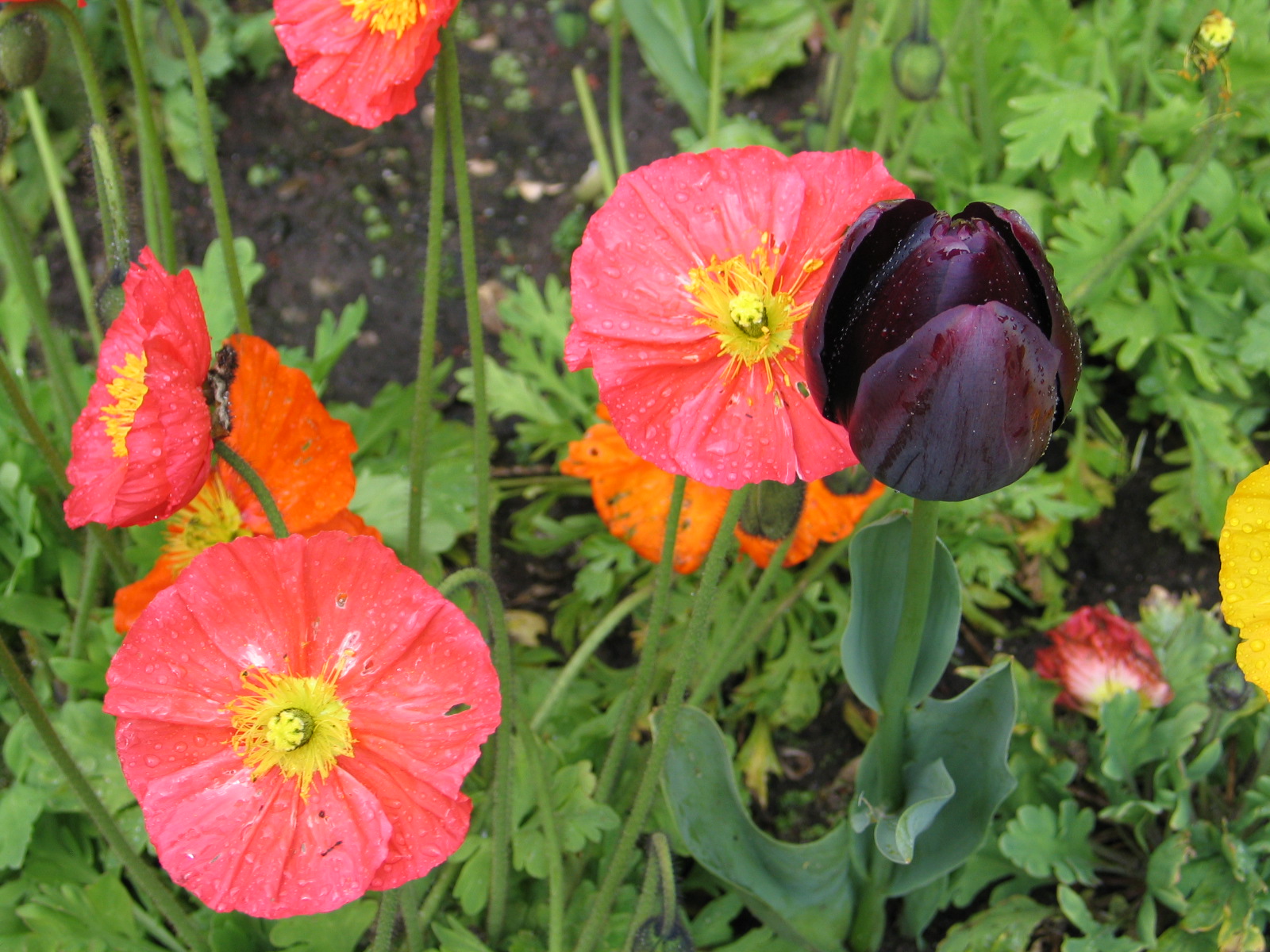
10 things to do/consider - client homework
Aristea spiralis 4
You took the first step and decided to call someone, I'm glad you found me. Do yourself a favor and start thinking about your project - I will bring my own ideas, what I need to hear are yours. Here's some things to consider and be prepared to chat about when we meet:
Read moreDesign fee negotiation?!
Osteospermum Sunadora 'Palermo' FL 1
I got into the design and Landscape Architecture business because I had one of those 'they pay people to do that?!' moments while looking for a major in college. I've been doodling, daydreaming, and designing as long as I can remember. I recently found a sketch I drew at about age 10 (?) of a pet store layout. I wanted a pet/people introduction room, an educational library, a little garden, a soda machine....I know I did a similar sketch for an imaginary plant nursery a few years later, I just can't find it.The point is that some designers (all of them?) entered their chosen industries because it is what they DO. Naturally. Automatically. All the time. Getting a degree and working in the chosen field for experience is just part of doing it professionally.When you are looking for a designer (of any sort), my personal take on it is that you want to work with someone who you like and who you think might understand you, all the better if that person has good taste. If your preferred designer charges a formidable fee for their time, it may be worth it to negotiate the contract so that you can work with the person you want to work with instead of looking for someone you can "afford". Perhaps that favored designer will sit down with you and brainstorm on the design for an hour or so. A napkin sketch and some notes can be all you need in certain situations. No contract is final until it is signed, see what you can work out!Keep in mind that bad design is just as expensive to install as good design! Unfortunately, it can cost you buckets more in the long run by lowering (at the very least not increasing) your property value.Good design is an investment - one that is just as important as the materials you choose to use and proper maintenance.
Wasting money 101
Aqiulegia vulgaris 'burnished rose' LF aa
Rosa 'Iceberg'
There are more ways to waste money needlessly than there are to save. I say that based on my years of experience seeing clients do things that I could not have made up. Truth IS stranger than fiction!!If I had a nickel for every time I turned to a co-worker and said "No, really. I didn't make it up!" ....Let me tell you a story:I once spent many hours developing a planting plan for a large, historic tudor home owned by a couple who's only comment on the firm's written questionnaire was that the wife didn't like the color orange or roses. I left messages and sent several e-mails asking for a quick phone call to try to narrow down what she did like so that I had some direction from them on the design. I presented the drawings in a few meetings with the husband having never heard back from the wife. Finally, after a couple of months, she attended a design meeting. She came into the room and plunked down a stack of magazine clippings of images that she liked, plants she was drawn to, etc. She had heard all my messages, and wanted to respond, but didn't let me know that she was doing anything at all on her end. As it turned out, she had a strong preference for white flowers and chartreuse foliage. In fact, she didn't like much that wasn't chartreuse or white. Never mind that the quality of the light at their home was too harsh for white and chartreuse without something else to set it off (like a nice deep green). She also noted that she likes shrub roses, but not hybrid teas. Had this client spoken up sooner, they would have saved thousands of dollars in design fees and I would've saved a lot of time.The one thing they did right in this story was to speak up before we were under construction. It is far less costly to change directions on paper than it is in the field.
Why hire a designer?
grading study
No, seriously, why should anyone hire a designer? I am one, but I don't do it for the money, believe me! If I didn't adore garden design, I wouldn't be doing it.
I am sure I'll come back to this again and again. First off, let me note that there's a difference between hiring someone whose job it is to design for your project and act as your advocate vs. someone who's job it is to buy (and markup) the materials, install the elements, maintain it, or do any other sales-affiliated work. This 'sales' person could be an ambitious gardener, a design-build company, or a straight-up contractor. There is overlap everywhere, as soon as I say that contractors can't design, someone will send me a link to a contracting company that hires professional designers.
If knowing that the person you hire is interested only in the safety and aesthetics of the project, and is advocating exclusively on your behalf, you should hire a designer. It is your designer's job to be cost-conscious and to listen to what you need. I have worked in firms that charged design fees based on construction cost - I always hated that. There isn't a design fee difference in designing a patio out of bluestone vs. limestone or brick. If your fence is Pine or Redwood, the details take the same amount of time to draw. However, those folks in the 'sales' business have a different profit margin based on the cost of the materials you select.
I worked for a while as a designer at a retail nursery. It was my job to design plantings for people's homes. I was expected to use the plants currently in the nursery and not ask for a special order. If the client bought their plants from the nursery, the design fee (a whopping $50.) was waived! In addition, my clients got planting plans that were specific to the time of year that they hired us in. If someone came in during summer, they got summer season plants. The good part was that I could actually pull aside the materials I was proposing and set them aside for the client to see in real life. Today, I rely on digital images, sketches, and visits to multiple nurseries instead.
So why hire a designer? The expectation is that the design work will be well-rounded, fitted to your budget, lifestyle, and aesthetics. The designer should help you make sound decisions based on form and function, not their own bottom line.

